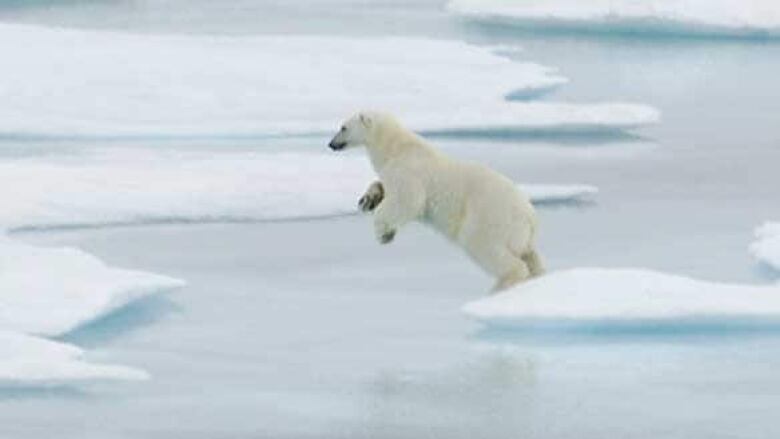World saw record temperatures in 2016 and it's getting warmer: study
Climate change contributed to Fort McMurray's devastating wildfire, meteorological organization says

The world experienced its hottest year in 2016, a trend that contributed to the wildfires that decimated parts of Alberta and appears to already be worsening, according to a global analysis released Tuesday.
The World Meteorological Organization (WMO) found that temperatures increased consistently around the globe last year hitting 1.1 C above the pre-industrial era with even higher fluctuations in the Arctic.
And the early data for 2017 shows that the earth continues to get warmer.

Those temperature spikes in the Arctic region contributed to Canada's comparatively balmy winter months last year. Combine that "polar equivalent of a heat wave" with the influence of El Nino and the world saw an increase in melting sea ice and the second-warmest year for its oceans, the study found.
The ripple effect of that stretches beneath the surface of the Coral Sea, off Australia's eastern coast. Mass coral bleaching continued there this year, something Australian scientists blamed primarily on climate change, Thomson Reuters reported in March.
About 35 per cent of the coral on the Great Barrier Reef has already been lost, according to that report.
Still a human problem
But while the WMO study found El Nino contributed to the record-breaking temperatures, the organization's secretary general said manmade carbon emissions remain the driving force behind the earth's warming.
"With levels of carbon dioxide in the atmosphere consistently breaking new records, the influence of human activities on the climate system has become more and more evident," Petteri Taalas said in a statement Tuesday.
- Mass coral bleaching in Great Barrier Reef for 2nd year
- 15 images of climate change around the world
To put that in perspective, carbon dioxide levels sat at 285 parts per million in 1880, the inaugural year of NASA's GISS temperature record.
They climbed steadily, however, alongside industrialization.
The amount of carbon dioxide in the air hit 400 parts per million in 2016 a jump of roughly 40 per cent since 1880 and those levels are unlikely to fall "for many generations to come," the study said.
"Carbon dioxide stays in the atmosphere for hundreds of years," WMO spokesperson Claire Nullis told CBC News. "It stays in the oceans even longer. So this really does underline the imperative need that if we want to act on climate change, if we want to keep temperature increases to a manageable level, we really have no time to waste."

The connection to Alberta
And while the study focused on the consistent temperature increase around the world, it noted that climate change has upgraded the severity of natural disasters.
The wildfires that raged in Fort McMurray, Alta.,from May until July 2016are an example.
The area saw its driest recorded winter and spring; when combined with the record early May temperature of 33 C, it created the perfect condition for the natural disaster, the WMO study said.
The two-month long wildfire remains Canada's most expensive insured disasterwith a price tagof $3.58 billion for insurers alone, according to an estimate from the Insurance Bureau of Canada last July.
More than 80,000 people fled their homes as the blazejumped highways and damaged or destroyed an estimated30,000 properties.
Haiti, meanwhile, is still recovering from Hurricane Matthew, which killed more than 1,000 people after it made landfall in October 2016. It was the first Category 4 storm to touch down on land since 1963, the study noted.
AUN climate change panel will discuss the resultson Thursday in New York City.
"We need to bear in mind that the [UN's] Paris climate change agreement commits us to keeping temperatures well below two degrees Celsius above the pre-industrial era," Nullis said. "We are already halfway there and this is indeed very worrying."














_(720p).jpg)


 OFFICIAL HD MUSIC VIDEO.jpg)
.jpg)



























































































